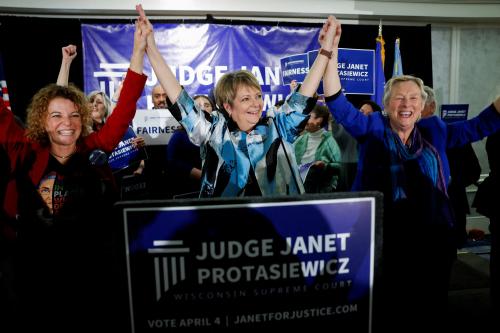On August 8, Ohio voters rejected Issue 1, a measure which would have immensely raised the signature and approval thresholds for citizen initiatives to amend the state constitution. Supporters of abortion rights have reason to celebrate the result, since Issue 1 was intended to derail the passage of an abortion rights measure on the November ballot, which will likely pass under majority rule.
Whether you believe abortion should be legal, and whether you think ballot measures are a good way to make policy, the results in Ohio should remind us of a broader and highly concerning political trend. For democracy to function, political actors must agree upon the rules of the game, and not alter those rules when they suspect they might lose.
To be clear: the problem with Issue 1 was not that the initiative process is a sacrosanct cornerstone of democracy. In fact, despite the lofty intentions of the Progressive-era proponents of direct legislation, initiative elections — which exist in 26 states — often feature low turnout, special interest spending, and low-information voters. But Issue 1 was not the result of a deep consideration of institutional reform; it was rushed onto the ballot to stop Ohioans from approving a state constitutional protection for abortion rights.
In the year after the Supreme Court overturned Roe v. Wade, Ohioans for Reproductive Rights collected more than twice the number of signatures needed to put the abortion rights amendment on the ballot for November 2023. Anticipating the success of that campaign, Republican state legislators moved to change the rules at the last minute, by calling for a special election on a constitutional amendment that would raise the signature numbers, require signatures from each of Ohio’s 88 counties, and raise the approval threshold to 60%. Campaign finance data reveals, unsurprisingly, that organizations concerned with abortion viewed this initiative as a key fight. As Ohio Secretary of State Frank LaRose admitted, “this is 100% about keeping a radical pro-abortion amendment out of our constitution.” Thus, though there are perfectly sound reasons to reform the initiative process, those rationales have nothing to do with the measure Ohioans considered yesterday.
What is more, the specific reforms proposed in Issue 1 draw on some of the worst traditions of anti-democratic governance in America. Requiring a supermajority of voters to agree to a policy is an approach straight from the “Jim Crow” playbook. Issue 1’s voter approval requirement was unusually high and the proposed signature requirement was also singularly onerous. No other state requires an initiative campaign to collect signatures from every county, a procedure that would give disproportionate weight to small, rural counties.
The substantive problems with Issue 1 were exacerbated by the decision to hold the election in August. Decisions about the rules of the democratic game, the basic processes by which citizens can engage in political reform, should certainly not be put before the voters when a relatively small fraction of the public is likely to participate. Off-cycle elections generally have exceptionally low turnout — a fact Ohio legislators surely know, since they passed a bill that eliminated almost all August special elections only last year. Even with the exceptional interest Issue 1 received, less than half of Ohio’s registered voters turned out.
From the standpoint of democracy, the results last night were reassuring. But in the long term, what really matters is that major political actors in Ohio and elsewhere have shown themselves willing to change the rules rather than lose an election. Particularly given the broader trend of voter suppression and democratic erosion in many states, this trend bodes very poorly for the functioning of our democratic system. Voters should remain vigilant.








Commentary
Ohio voters reject Issue 1 — here’s what that means for democracy
August 9, 2023